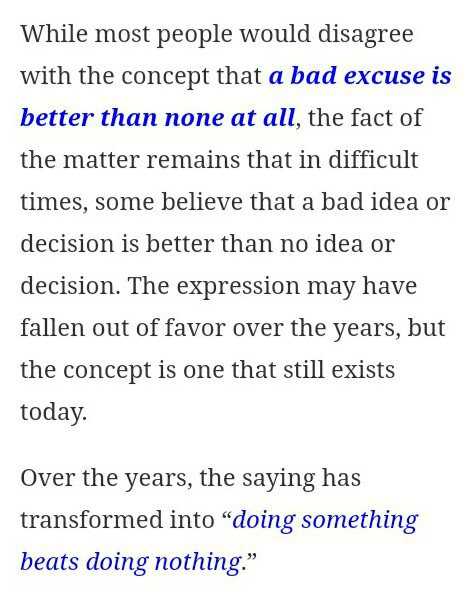- Mistakes in Liming and Their Consequences
- 1. Incorrect Measurement of Soil pH
- 2. Failure to Consider Soil Composition
- 3. Applying Lime at the Wrong Time
- 4. Overliming
- 5. Underliming
- 6. Incorrect Lime Type and Application Method
- 7. Lack of Regular Soil Testing
- Lack of Essential Nutrients
- Soil Acidity May Increase
- Poor Plant Growth and Yield
- Nutrient Imbalance
- Reduced Soil Microbial Activity
- Effects of Reduced Soil Microbial Activity:
- Preventing Reduced Soil Microbial Activity:
- Decreased Nutrient Availability
- Increased Soil Erosion
- Negative Impact on Water Quality
- “Question-Answer”
- What is liming in agriculture?
- What are the consequences of improper liming?
- How can over-liming affect plant growth?
- What are the consequences of under-liming?
- How can improper liming impact soil structure?
- What is the proper way to determine lime application rates?
- “Video” Benefits of Lime Video
Liming is an essential practice in agriculture and gardening, as it helps to adjust the soil pH and provide necessary nutrients to the plants. However, many people make common mistakes when it comes to liming, which can have severe consequences for their crops and gardens. In fact, improper liming can be worse than not liming at all.
One common mistake is applying too much lime. Some gardeners believe that adding more lime will quickly raise the pH of the soil, but this can actually harm the plants. Excessive lime can lead to an imbalance in the soil pH, making it too alkaline for many plants to thrive. Additionally, it can cause nutrient deficiencies, as the excessive lime can bind with other nutrients and make them unavailable for the plants.
Another mistake is applying lime without conducting a soil test. Each soil has its own pH level and nutrient composition, and adding lime without knowing the specific needs of the soil can be detrimental. Applying lime without a soil test can result in over-liming or under-liming, both of which can negatively impact plant growth. Over-liming can lead to nutrient imbalances and toxicity, while under-liming can prevent plants from accessing necessary nutrients.
Proper timing is also crucial in liming. Some gardeners may apply lime at the wrong time of year, such as during periods of heavy rain or when the soil is frozen. This can cause the lime to wash away or remain ineffective in the soil, wasting both time and resources. It is important to apply lime when the soil is workable and the weather conditions are favorable for the lime to take effect.
Mistakes in Liming and Their Consequences
1. Incorrect Measurement of Soil pH
One of the most common mistakes in liming is the incorrect measurement of soil pH. Soil pH is a crucial factor in determining the type and amount of lime needed for a particular soil. If the pH is measured inaccurately, it could lead to either an over- or under-application of lime.
2. Failure to Consider Soil Composition

Another mistake is the failure to consider the soil composition before applying lime. Different types of soil have different buffering capacities and will require varying amounts of lime to achieve the desired pH level. Ignoring soil composition can result in ineffective liming and wasted resources.
3. Applying Lime at the Wrong Time

Timing is essential when it comes to liming. Applying lime at the wrong time can have negative consequences. For example, applying lime when the soil is frozen or saturated with water can lead to poor lime distribution and leaching. It is important to apply lime when the soil is dry and can easily absorb the lime particles.
4. Overliming
Overliming is a common mistake that can have severe consequences. When too much lime is applied, it can raise the soil pH beyond the desired range, making it unsuitable for certain plants. Overliming can also result in nutrient imbalances and inhibit the availability of essential nutrients for plant growth.
5. Underliming
On the other hand, underliming is equally detrimental. When lime is underapplied, the soil pH may remain too acidic, leading to nutrient deficiencies and poor plant growth. Underliming can also lead to increased acidity over time as the lime gets gradually depleted.
6. Incorrect Lime Type and Application Method
Using the wrong type of lime and applying it incorrectly can have negative consequences as well. There are different types of lime, such as aglime, dolomitic lime, and hydrated lime, each with its own characteristics and recommended uses. Applying the wrong type of lime or using the wrong application method can result in ineffective liming.
7. Lack of Regular Soil Testing
Finally, failing to conduct regular soil testing is another mistake that can lead to improper liming. Soil conditions change over time, and regular testing is necessary to determine the current pH levels and adjust lime application accordingly. Without regular testing, it is impossible to know if the soil pH is being adequately managed.
In conclusion, avoiding these mistakes and ensuring proper liming practices are essential for maintaining healthy and productive soils. Proper soil testing, accurate measurement of pH, consideration of soil composition, timing, and appropriate application methods are all crucial factors to consider for successful liming.
Lack of Essential Nutrients
Lack of essential nutrients is a common consequence of improper liming. When lime is not applied correctly or in the right amounts, it can cause nutrient deficiencies in the soil. This is because lime works by raising the pH level of the soil, which can affect the availability of nutrients to plants.
One of the main nutrients that can become deficient due to improper liming is iron. Iron is an essential micronutrient that is important for plant growth and development. When the pH level of the soil is too high, iron becomes less available to plants, leading to iron deficiency. This can result in yellowing of leaves, stunted growth, and reduced yield.
In addition to iron, other essential nutrients like manganese, zinc, and copper can also become less available in alkaline soil. These nutrients are necessary for various physiological functions in plants and their deficiency can affect overall plant health and productivity.
Furthermore, improper liming can also affect the availability of macronutrients like phosphorus and potassium. These nutrients are important for plant growth and are often added in the form of fertilizers. However, when the pH level of the soil is too high, these nutrients can become bound and unavailable to plants, leading to nutrient deficiencies.
In conclusion, the lack of essential nutrients is a significant consequence of improper liming. It is important to carefully consider the pH level of the soil and apply lime in the correct amounts to avoid nutrient deficiencies and promote healthy plant growth.
Soil Acidity May Increase
One of the consequences of improper liming is that soil acidity can actually increase over time. This may seem counterintuitive since the purpose of liming is to neutralize acidity, but if done incorrectly, it can have the opposite effect.
One common mistake is applying too little lime. When the recommended amount is not met, the soil may not be sufficiently neutralized, allowing the acidity to persist. Additionally, the wrong type of lime or insufficiently ground lime can also contribute to this problem.
Another mistake is applying lime at the wrong time. Ideally, lime should be applied before planting or during fallow periods to allow it enough time to react with the soil. If lime is applied too close to planting time, it may not have sufficient time to neutralize acidity, leading to increased soil acidity.
Soil acidity can have detrimental effects on plant growth. It hampers nutrient availability, making it harder for plants to absorb essential minerals. This can result in stunted growth, nutrient deficiencies, and lower crop yields. Additionally, certain plants have specific pH requirements, and increased soil acidity can make it challenging to grow these plants successfully.
To avoid increasing soil acidity, it is crucial to follow proper liming practices. This includes conducting regular soil tests to determine the pH and nutrient levels, as well as consulting professional agronomists for optimal lime application rates and timing. By understanding and implementing correct liming techniques, farmers and gardeners can maintain soil health, enhance plant growth, and optimize crop yields.
Poor Plant Growth and Yield

One of the major consequences of improper liming is poor plant growth and reduced crop yield. When the soil pH is not within the appropriate range, plants are unable to uptake essential nutrients from the soil, leading to stunted growth and low productivity.
Lack of Nutrient Availability:
Improper liming can cause nutrient lock-up where essential nutrients become chemically bound in the soil, making them unavailable for plant uptake. For example, an excessively high pH resulting from over-liming can cause phosphorus to bind with calcium or iron, rendering it inaccessible to plants. This nutrient deficiency can severely limit plant growth and reduce crop yields.
Imbalance in Soil Microbial Activity:
The pH level of the soil directly affects the activity of soil microorganisms, which play a crucial role in nutrient cycling and plant health. Improper liming can disturb the delicate balance of soil microbia, leading to a decline in beneficial microbial populations, such as nitrogen-fixing bacteria or mycorrhizal fungi. This imbalance in soil microbial activity can impair nutrient availability and reduce plant growth and yield.
Aluminum Toxicity:
Over-liming can result in the release of toxic aluminum ions in the soil. These aluminum ions can be taken up by plants, causing aluminum toxicity. High levels of aluminum can inhibit root growth and affect nutrient uptake, leading to poor plant growth and reduced crop yield.
Increased Susceptibility to Pests and Diseases:
Poorly limed soils can create an environment that is more favorable for pests and diseases. When plants are stressed due to nutrient deficiencies or imbalances caused by improper liming, they become more susceptible to attacks from insects, pathogens, and other pests. This can result in significant damage to crops and further reduce overall plant growth and yield.
In conclusion, improper liming can have detrimental effects on plant growth and yield. It is essential to carefully monitor and adjust soil pH levels to ensure optimal nutrient availability, microbial activity, and plant health. By avoiding the common mistakes in liming, farmers can promote healthy plant growth and achieve higher crop yields.
Nutrient Imbalance
One common mistake in liming is not considering the nutrient balance in the soil. Lime is typically used to raise the soil’s pH level and make it more alkaline, which can help improve the availability of certain nutrients. However, excessive liming can lead to a nutrient imbalance.
When soil pH becomes too high due to over-liming, essential nutrients like iron, manganese, and zinc can become less available to plants. This can result in nutrient deficiencies and negatively impact plant growth and productivity.
In addition, excessive liming can alter the ratio of available nutrients in the soil. For example, high levels of calcium from lime can lead to an imbalance with other nutrients such as magnesium and potassium. This can disrupt the nutrient uptake by plants and affect their overall health.
To avoid nutrient imbalances caused by improper liming, it is important to consider the current nutrient levels in the soil and adjust lime application accordingly. Soil tests can provide valuable information about the nutrient content and pH of the soil, helping determine the appropriate amount of lime needed.
Furthermore, it is essential to regularly monitor soil pH and nutrient levels to ensure that a proper balance is maintained. This can be done through periodic soil testing and adjusting lime application rates based on the test results.
By taking these precautions and being mindful of the nutrient balance, farmers and gardeners can avoid the negative consequences of nutrient imbalances caused by improper liming, and instead create a healthy and productive growing environment.
Reduced Soil Microbial Activity

One of the consequences of improper liming is reduced soil microbial activity. Soil microbes play a crucial role in maintaining soil health and fertility. They are responsible for various important functions, including nutrient cycling and organic matter decomposition.
When lime is applied incorrectly, it can create an unsuitable environment for soil microbes, leading to a decrease in their activity. This can have several negative implications for soil health and plant growth.
Effects of Reduced Soil Microbial Activity:
- Impaired Nutrient Cycling: Soil microbes are essential for breaking down organic matter and releasing nutrients in forms that plants can absorb. Reduced microbial activity can disrupt this nutrient cycling process, resulting in nutrient deficiencies for plants.
- Poor Organic Matter Decomposition: Soil microbes are responsible for breaking down organic matter into humus, a stable form of organic matter that provides many benefits to the soil. When microbial activity is reduced, the decomposition process slows down, leading to a buildup of organic matter and a decrease in soil fertility.
- Inhibited Disease Suppression: Certain soil microbes are known for their ability to suppress plant diseases. When microbial activity is reduced, the soil’s natural disease suppression capacity is weakened, making plants more susceptible to diseases.
- Reduced Soil Structure: Soil microbes contribute to the formation and stabilization of soil aggregates, which are important for soil structure and water infiltration. Reduced microbial activity can result in weak soil structure, leading to compaction and waterlogging issues.
Preventing Reduced Soil Microbial Activity:

To prevent reduced soil microbial activity caused by improper liming, it is essential to adhere to proper liming practices:
- Soil Testing: Conduct regular soil testing to determine the pH and nutrient levels of the soil. This will help determine the appropriate lime application rate and timing.
- Correct Lime Application: Apply lime evenly and thoroughly to ensure proper distribution throughout the soil. Follow the recommended application rates based on the soil test results.
- Monitor Soil pH: Regularly monitor the soil pH to ensure it stays within the optimal range for microbial activity. Lime can be reapplied as needed to maintain the desired pH level.
- Amend Organic Matter: Incorporate organic matter into the soil to support microbial activity. Organic amendments can improve soil structure, nutrient availability, and overall soil health.
By following these practices, the negative consequences of reduced soil microbial activity can be minimized, leading to healthier soils and improved plant growth.
Decreased Nutrient Availability
One of the consequences of improper liming is a decrease in nutrient availability for plants. Liming is often used to raise soil pH, which in turn affects the availability of essential nutrients for plant growth.
When the soil pH is too low (acidic), certain nutrients, such as phosphorus, become less available for plants. This can lead to nutrient deficiencies and stunted growth. Additionally, the low pH can increase the solubility of aluminum and manganese, which are toxic to many plants.
On the other hand, when the soil pH is too high (alkaline) due to excessive liming, nutrient availability can also be negatively affected. High soil pH can cause nutrients like iron, manganese, copper, and zinc to become less available to plants. These micronutrients are essential for various plant functions, and their limited availability can hinder growth and development.
Furthermore, improper liming can cause imbalances in soil nutrient ratios. For example, excessive liming can lead to an excess of calcium, which competes with other nutrients for plant uptake. This can disrupt nutrient balance and lead to deficiencies in other essential elements.
In summary, improper liming can decrease the availability of essential nutrients for plants, leading to nutrient deficiencies, imbalances, and stunted growth. It is crucial to carefully assess soil conditions and follow appropriate liming guidelines to prevent these consequences.
Increased Soil Erosion
One of the consequences of improper liming is the increased soil erosion. When soils are excessively limed, it can lead to the breakdown of soil aggregates and the loss of soil structure. This can result in increased soil erosion, as the soil particles become more susceptible to being washed away by rainwater or blown away by wind.
Proper soil structure is vital for preventing soil erosion. Soil aggregates help to bind soil particles together, creating stable soil structure that can withstand the erosive forces of water and wind. However, excessive liming can destroy these aggregates and cause the soil to become loose and easily eroded.
In addition to the loss of soil structure, improper liming can also lead to the depletion of organic matter in the soil. Organic matter plays a crucial role in maintaining soil structure and stability. It acts as a glue, binding soil particles together and promoting the formation of aggregates. When the soil pH is too high due to excessive liming, the activity of soil microorganisms responsible for breaking down organic matter can be inhibited. As a result, organic matter levels decline, further reducing soil stability and increasing the risk of erosion.
Increased soil erosion can have devastating effects on agricultural productivity and environmental health. Eroded soils are less fertile and have reduced water-holding capacity, making it more difficult for plants to establish and grow. The sediment carried by eroded soils can also contaminate water bodies, leading to water pollution and the degradation of aquatic ecosystems.
To prevent increased soil erosion due to improper liming, it is important to conduct soil tests regularly to determine the appropriate liming requirements. Soil testing can help determine the current soil pH and nutrient levels, allowing for accurate liming recommendations. It is also crucial to follow liming guidelines and recommendations provided by experts or local agricultural extension offices to ensure proper and sustainable liming practices.
Negative Impact on Water Quality

Improper liming practices can have significant negative impacts on water quality. When lime is applied to soil without proper consideration of its composition and the specific needs of the plants being grown, it can easily leach into nearby water sources. This can result in a number of consequences, including:
- Increased alkalinity: Lime has the ability to raise the pH level of water. Excessive alkalinity can be detrimental to aquatic life, causing imbalances in the ecosystem and potentially leading to the death of certain organisms.
- Decreased oxygen levels: Lime can contribute to an increase in organic matter in water, leading to the growth of algae blooms. These blooms can deplete oxygen levels in the water, causing harm to fish and other aquatic species that depend on oxygen for survival.
- Water pollution: The leaching of lime into water sources can introduce various chemical compounds into the water, including calcium and magnesium. While these minerals are essential for plant growth, an excess of them can lead to pollution and imbalances in water composition.
- Impact on human health: In areas where lime has leached into drinking water sources, it can have adverse effects on human health. Excessive exposure to lime-contaminated drinking water can cause digestive issues and other health problems.
It is important for farmers and landowners to adopt proper liming practices to avoid these negative impacts on water quality. This includes conducting soil tests, determining the appropriate amount of lime to apply, and considering the potential impacts on nearby water sources. By doing so, the negative consequences associated with improper liming can be minimized, and the overall health of the soil and surrounding ecosystem can be better maintained.
“Question-Answer”
What is liming in agriculture?
Liming in agriculture refers to applying lime to the soil in order to raise its pH level. It is done to neutralize the acidity of the soil and make it more suitable for growing crops.
What are the consequences of improper liming?
Improper liming can have several consequences. It can lead to over-liming, which can increase soil pH beyond the optimal range and negatively affect plant growth. It can also result in under-liming, where the soil pH remains acidic and limits nutrient availability. Both scenarios can lead to poor crop yield and quality.
How can over-liming affect plant growth?
Over-liming can raise the soil pH to levels that are too high for optimal plant growth. This can cause nutrient imbalances, as certain nutrients become less available to plants at high pH levels. It can also disrupt the soil microbial activity, affecting nutrient cycling processes. The overall result is stunted growth, nutrient deficiencies, and reduced crop yield.
What are the consequences of under-liming?
Under-liming can keep the soil pH acidic, which negatively affects nutrient availability. Acidic soils can lock up essential nutrients like phosphorus, calcium, and magnesium, making them less available to plants. This can lead to nutrient deficiencies, poor root development, and reduced crop yield and quality.
How can improper liming impact soil structure?
Improper liming can impact soil structure by altering the balance of different soil particles. Over-liming can cause clay particles to flocculate, leading to poor soil drainage and compaction. Under-liming can result in increased aluminum and manganese toxicity, which can damage root systems and compromise soil structure. Both scenarios can hinder root growth and nutrient uptake.
What is the proper way to determine lime application rates?
The proper way to determine lime application rates is by conducting a soil test. Soil tests provide information about the soil’s pH, nutrient levels, and other relevant factors. This information helps in calculating the amount of lime needed to raise the soil pH to the desired level. It is important to follow the recommended lime application rates to avoid over-liming or under-liming.







